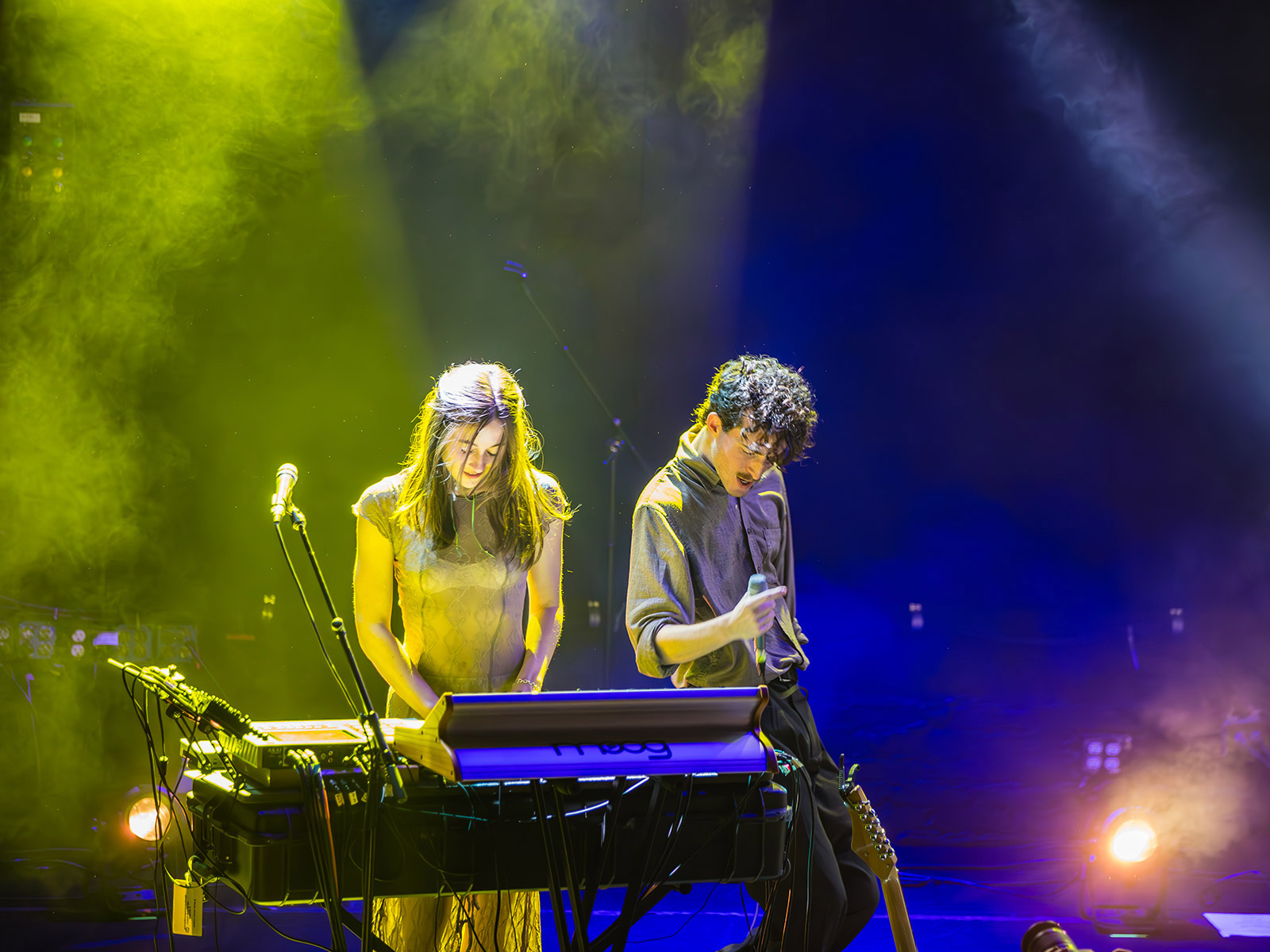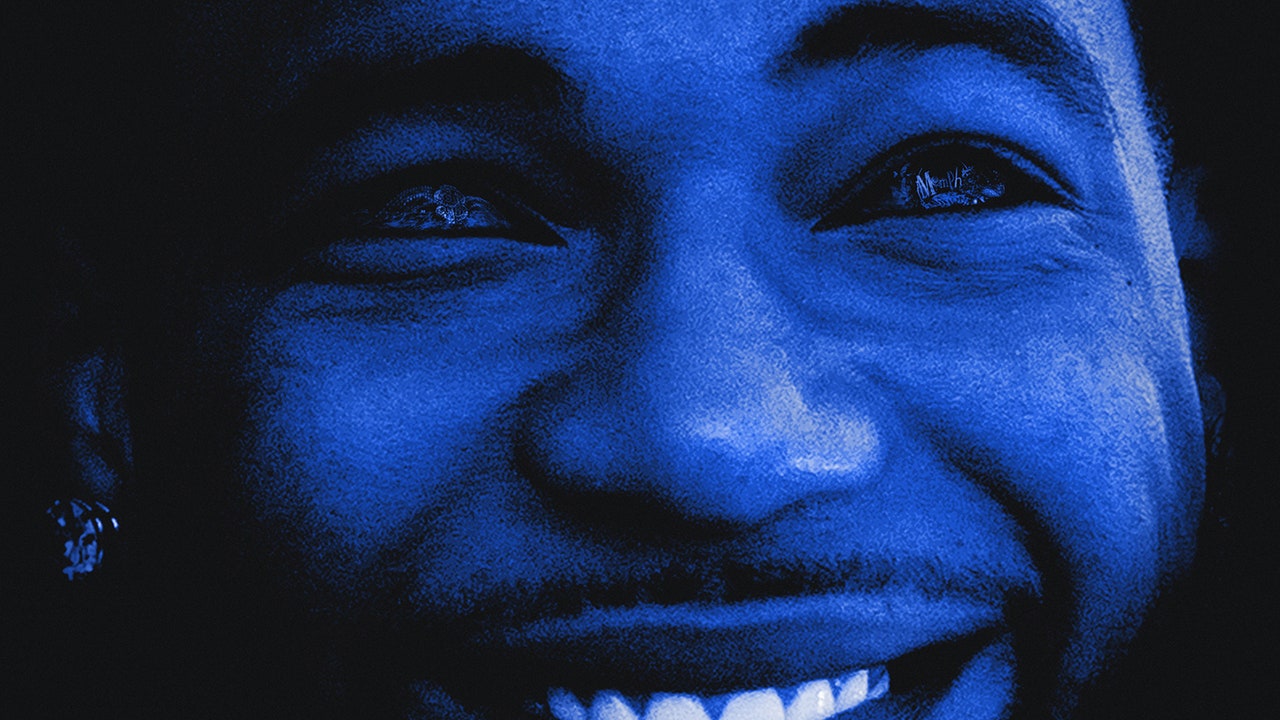If you watched MTV in the ’90s, you need no introduction to “One Headlight.” The music video was coursing through the cable TV circuit like an ice cream truck circling the suburbs. Like much of the album, the song was structurally simple—a canvas for Dylan’s rust-eaten imagery: cheap wine, busted trucks, and the stench of death. For all the media’s insistence that Dylan must have been influenced by his dad, “One Headlight” pointed to another American Son: Bruce Springsteen. The lyric “This place is old/It feels just like a beat-up truck/I turn the engine but the engine doesn’t turn” was a direct reference to Springsteen’s 1987 song “One Step Up”: “Went out and hopped in my old Ford/Hit the engine but she ain’t turnin’.” Dylan accepted the irony that even if he didn’t spin his father’s records till the grooves smoothed out, his idols surely had.
At some point during the promo cycle for Bringing Down the Horse, someone remembered a powerful economic force: schoolgirls. I was only 7 when the shadowy video for “One Headlight” hit MTV, but it was obvious that Dylan had been packaged as a heartthrob. Shot under a bridge in Brooklyn, the visual pulls tight focus on Dylan’s eyes, which have been labeled every shade of azure since the clip first aired in 1997. His fetishized irises seemed like a marketing course correction: The video for “6th Avenue Heartache,” directed by a young David Fincher, had all the allure of a PowerPoint presentation. It was also filmed in black and white, robbed of those “startling, Samoyed-blue eyes,” as one reporter described them. The rest of the album’s videos were shot in color.
Dylan was aware of his hunk status, but didn’t dwell on it too much. He was a husband and father in his mid-20s, and had seen first-hand how fame could corrode family life. If his picture was being torn out of glossy magazines and slipped into binder covers, he found it amusing. In a 1998 interview with Rolling Stone, the wry musician was asked to comment on his undeniable “yumminess.” “Well, you know, to be called yummy is a fantastic honor,” he said, tongue firmly in cheek. “I’m going to do everything I can to continue to face up to that and not let anyone down in the future.”
But while he laughed at himself and his perceived sex appeal, Dylan never dismissed the contingent of Wallflowers fans who were taping his photo on their bedroom walls. “People frown on having young fans, especially young girls,” he said in ’97. “But if people look back and get their education, they’d realize young girls discovered the Beatles before anybody.” Dylan was quick to clarify that he wasn’t ranking his band alongside the Fab Four—but he couldn’t ignore the frenzied concertgoers. One night at Boston’s Avalon Ballroom, a frilly brassiere made its way on stage, followed by a dog-eared copy of Lolita.
By 1998, Bringing Down the Horse had sold 4 million copies—more than any solo studio album by Bob Dylan, as the trade papers liked to point out. “One Headlight” picked up two Grammy Awards that year, for Best Rock Song and Best Rock Performance by a Duo or Group. The Wallflowers would go on to release five more studio albums; their latest landed just two years ago. But they’d never summit the mountain again. Arriving between the death of Kurt Cobain and the release of Radiohead’s OK Computer, Bringing Down the Horse was the last gasp of chart-topping, Western-bent alternative rock. Dylan was no longer swimming upstream. And the hands that had tried to grab him were fishing in different waters.
Additional research by Deirdre McCabe Nolan
All products featured on Pitchfork are independently selected by our editors. However, when you buy something through our retail links, we may earn an affiliate commission.
All products featured on Pitchfork are independently selected by our editors. However, when you buy something through our retail links, we may earn an affiliate commission.



